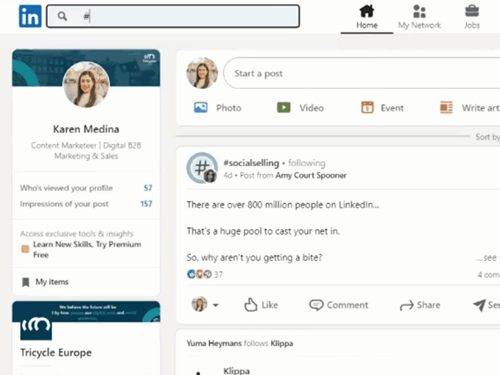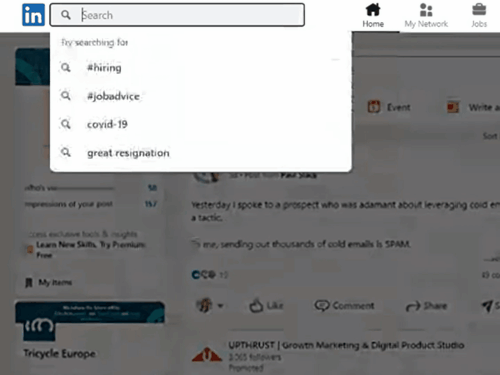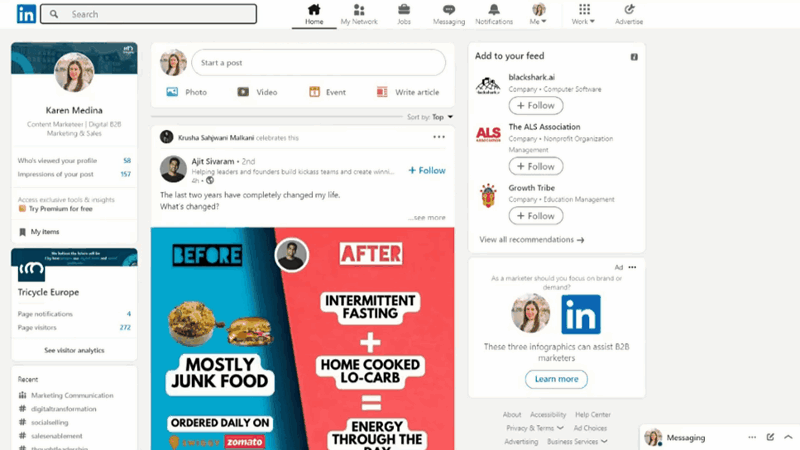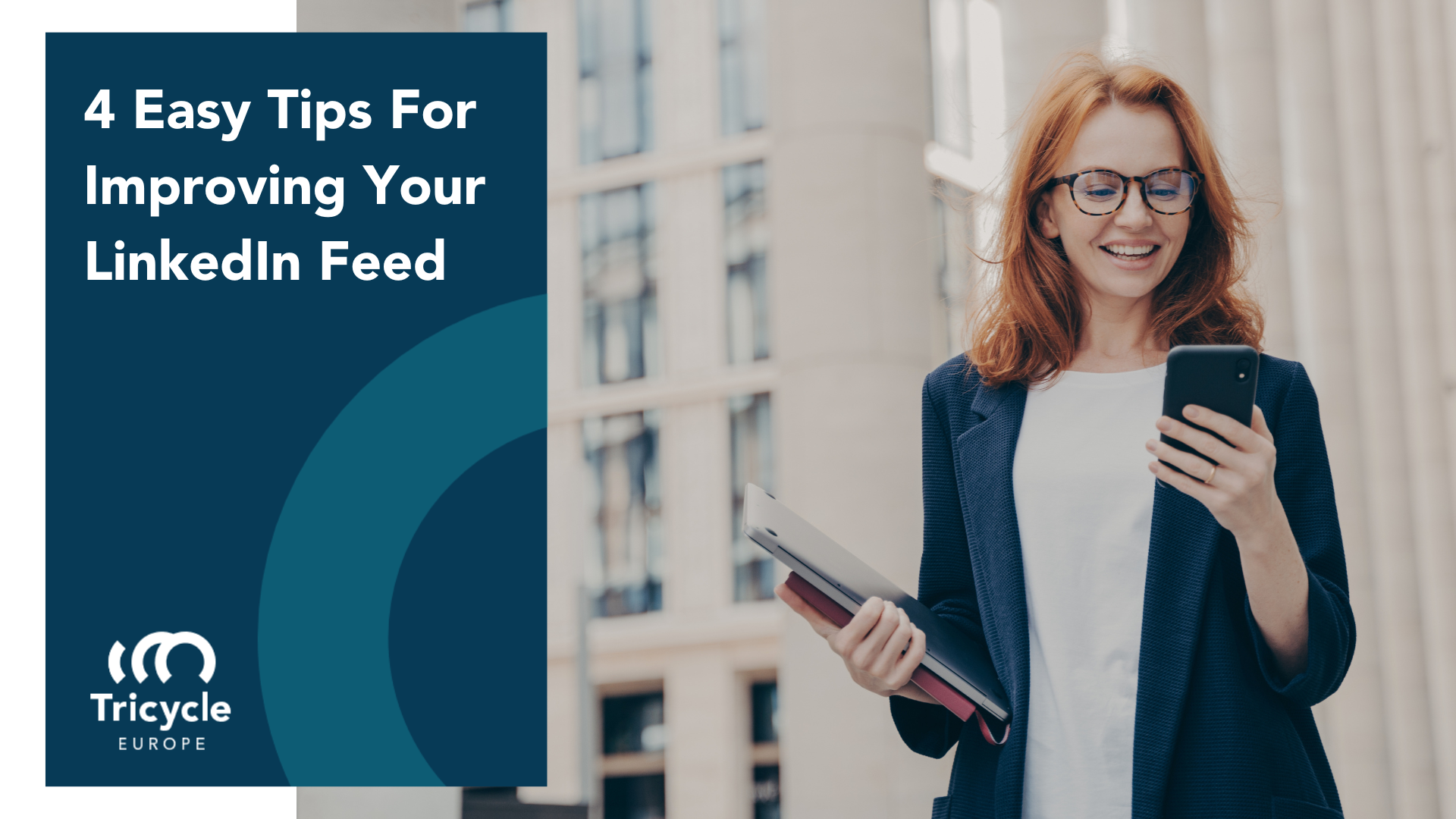One of the greatest benefits of LinkedIn is that it’s an incredibly easy way to stay informed with the latest news and updates in your industries. When you log on, you most likely see updates from all of your connections. This can be both good and bad, depending on how many people you’re connected to. It’s important to carefully curate your newsfeed to avoid wasting time scrolling through irrelevant content and instead, have a feed filled with valuable content that you actually WANT to see, and can then save and re-share via your profile.
Here are our top four tips to take control of what you want to see, and help improve your LinkedIn feed.
Tip #1: Follow Hashtags
By subscribing to hashtags, you’ll be shown content around these terms. It’s best to subscribe to two types of hashtags:
Niche hashtags: this will ensure a quality vs quantity approach, and avoid being “drowned” in very broad hashtag terms that may not be relevant to you. For example, it’s better to follow #linkbuilding rather than too-general terms like “marketing”.
Branded (personal) hashtags: this will further increase your chances of seeing posts from your favourite accounts.

Interested in learning more about hashtags? Check out our Ultimate Guide for LinkedIn Hashtags.
Tip #2: Join Groups
Groups are a fantastic opportunity to develop your personal brand and professional community on LinkedIn. To find groups that are relevant to your industry and interests, type relevant terms into the search bar at the top, and then select the Groups tab. Try to be as specific as possible, to ensure the content will be of high value to you. You can also view LinkedIn’s recommended groups for you by going to “My Network”.

Tip #3: Follow influencers and industry leaders
Following thought leaders and movers in your industries will provide you with constant inspiration, a stream of expert ideas and other valuable content. They also have the power to connect you with other leaders in your industry.
If you are already following hashtags and groups, this will help you to identify successful LinkedIn influencers directly on your feed. Another option is to search by keyword (e.g. “technology”) in the search box and then use filters to narrow down the research; filtering by industry is highly recommendable. You can also visit “Discover more” (on the left side, right below your “Followed Hashtags” section) to view profiles that people in your industry are following.

Pay attention to how many followers they have, the quality of the posts and articles, how much engagement they receive, and how often their posts are shared.
Once you have found your influencers, activate the bell feature (right below the background photo on their profiles) to ensure you never miss their posts in your feed.
Tip #4: Follow third sources
Follow diverse and trustworthy third-party sources and subscribe to newsletters that align with your values and interests. This will provide you with a host of daily news and articles that you can then reshare with your connections. By clicking on “My Network” in LinkedIn, you’ll be able to view recommended newsletters based on your interests.
It is also a good idea to follow companies that are important to you, to ensure you stay up to date with their news, hot topics, structural changes, and others.
Additional tips
- Spring clean regularly. Do the above four steps regularly. If you don’t like the content you’re seeing, you can always readjust and make changes according to what you want to see in your feed.
- Engage with content that you find relevant. The more you interact with these types of posts, the more your newsfeed will serve up similar statuses that are posted by the same people, pages or groups, or dealing with the same topics. TIP: commenting with at least 5 words is the heaviest form of engagement for the algorithm.
- Hide irrelevant posts. Discourage the algorithm from serving you similar irrelevant posts by clicking on the three little dots in the top right corner of the status, and select “I don’t want to see this”.
Final thoughts
We hope this post has given you a clear picture of how to clean up your LinkedIn newsfeed in order to improve your overall experience of the platform and provide greater value to you by displaying the content you want to read about and share, and an opportunity to connect with those connections you want to stay top of mind with.
If you liked this article, you might enjoy Who Should I Connect with on LinkedIn and Why?


